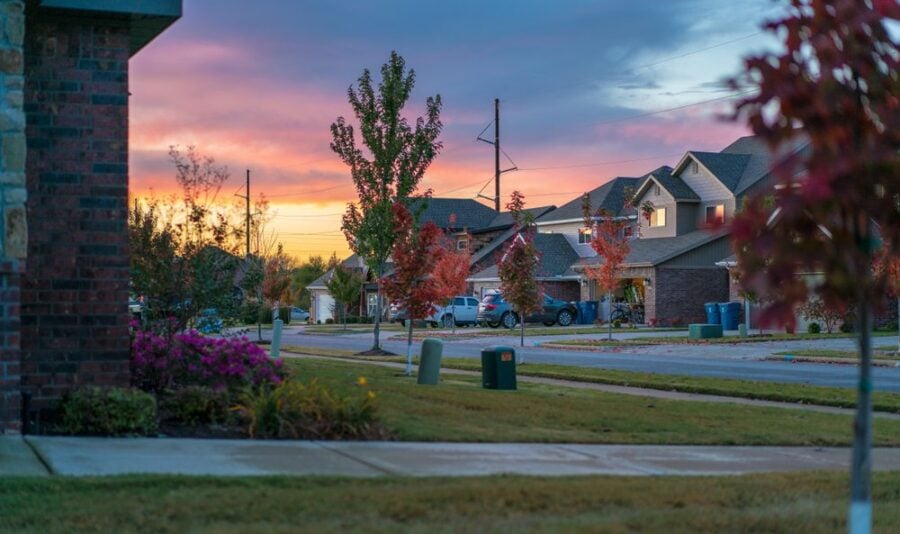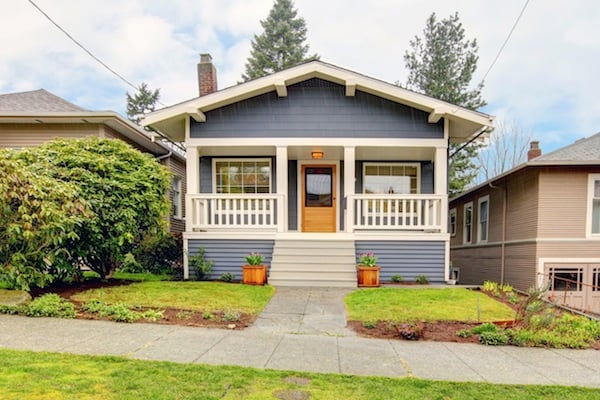Are you fed up with the hustle of city life? Looking for a slower pace, or perhaps more space? Or maybe you’re moving not by choice but as an obligation, for work, love, or family. Whatever the reason, moving from a city to a suburb will require adjustment.

The United States has seen a bit of an ebb and flow in population density. Long ago, the allure of suburban life caused people to move en masse out of the cities. In recent years, city life has gotten more appealing (hello, Austin, Denver, and Seattle!) and caused a boom in construction and prices.
The Covid-19 pandemic has caused many people to evaluate their life choices. Many people grew weary of their homes and outlooks after long months of restricted movement. Others simply found that with more time on their hands, they asked themselves: what is it that I want?
What Are the Differences Between City and Suburb?
While this seems like a simple question, it’s more nuanced than you may think. Defining a city from a suburb depends on who you ask.
Some people consider a city the core metropolitan area and suburbs, the areas lying at the city’s periphery.
Others define cities and suburbs by population. A place with more than 100,000 may be considered a city. Some suburbs range anywhere from 10,000 to one million inhabitants. You can also consider age brackets. Cities tend to have young, educated adults, whereas older populations will favor suburban life.
Many people define cities and suburbs by their general feel to make it easy. You could reasonably expect a city to be a bustling commercial center with a diverse population and housing types. If we ask you to picture a suburb? Images of single-family homes, big grassy yards, and strip malls might come to mind.
Questions to Ask Yourself

Before you act on an impulse and give up your sought-after apartment searching for greener pastures, make sure you know just what you’re getting into. Many “city people” love their life in the ‘burbs – and vice versa – so it may be the right choice for you. Just make sure you ask yourself a few questions to help with the culture shock of the move.
Location and Transportation
- How will you get to/from work?
- How far are you willing to commute?
- If you’re taking public transport, will it be easy to get where you need to go?
- Are cultural activities important to you? How far are you willing to travel to experience them?
Budget
- What is your budget for rent, transportation, food, taxes, healthcare, etc.?
- If you’re buying a home for the first time, don’t forget that you will need a budget for maintaining it, including repairs, lawn and garden care, and more.
Neighborhood
- What amenities do you want or need in your neighborhood? A park? Good schools? Access to public transport or the highway?
- What type of home do you want to live in? Rent or buy?
Education and Family Needs
- What do you need to ensure you have for your family?
- Schools, daycare centers, afterschool and social programs are all critical considerations.
- For many people, easy access to a hospital and a veterinary clinic is essential for peace of mind within their family home.
Suburban Pros and Cons
If you’ve run through those questions and think you’ve decided that suburban life is for you, let’s look at some pros and cons, so you know what you’re in for.
Pros
If you’ve started to look at the suburbs, you’ve likely already noticed one of the significant differences: the price. The cost of living in suburban areas is much more affordable than in the city.
Depending on your lifestyle in the city, you may find you have additional expenses come up that weren’t a consideration before. Car insurance, homeowners’ insurance, home and garden maintenance add a cost or two to the overall picture. You may find that these added expenses are balanced by the lower cost of housing, food, gas, healthcare, childcare, and more.

If you’ve been in the city wishing you could stretch out a bit, the suburbs have what you need. Suburban life offers much more space, including single-family homes for the same (or lower) price as your inner-city apartment.
With the option of a house comes another luxury: a garden or a yard. Particularly attractive for parents and those with pets, having extra space for your two- or four-legged ones to play is invaluable.
The last benefit to living in a suburb isn’t a hard-and-fast rule but tends to be the case in many areas across the country: the school system. Classes tend to have a better student-to-teacher ratio in suburban towns. That means students and teachers have a greater opportunity to work together to further their educational and academic goals.
Cons
Before throwing away your metro card and shopping for hanging plants, consider some of the downsides to living in the suburbs.
As we mentioned before, the suburbs are an attractive option for the older generations. They have reached a stage in life where a slower pace, earlier nights, and more space appeal. Of course, these things can appeal to anyone of any age, but if you’re a young person indulging in city life and used to having the world at your fingertips, it will take some adjusting.
While the suburbs have seen an increase in populations, that’s not true of ages across the board. Research showed increases between 2000 and 2018 in the under-25 age group and those 64+. Of course, that was pre-pandemic, and things are shifting these days.
City Pros and Cons
Even if you’re set on moving to the city, it’s good to keep some things in perspective. Having an objective look at the pros and cons of city life can help you get set for leaving it behind.
Pros
If you’re aching to get out of the city, it’s probably hard to imagine the upsides.
Many people flee the city with their computers in hand, ready to work remotely from a more spacious home. The availability of remote work has skyrocketed, which means many are also moving into other roles.
However, the reality is that many companies are calling their employees back. Whether it’s full-time or a hybrid model, you may need to commute into the city to keep your job. Roles in the city are more diverse, abundant, and have higher pay grades than in suburban places.

You’ll find that the price to own a home or condo in the suburbs is lower, which may be attractive for purchasing your place. Bear in mind that property values tend to appreciate faster in the city. Investments are more lucrative in inner-city neighborhoods and are a safer bet.
Cities are great for public transportation, making it easy to go without owning (and maintaining) a car. You’ll save money and the environment by taking shared/public transport when you need to get somewhere. And if you have a destination in the city? There’s no need to sit in traffic as you commute in or out – you’re already there.
Arguably the most attractive part of living in a city is the vibrant energy. Cities are culturally diverse and have many things on offer, whether you’re an introvert who loves reading at your local cafe, an extrovert who likes to meet people at events and happy hours, or a night owl who wants to stay out ‘til the wee hours. Foodies, art buffs, fitness enthusiasts, and more will all find their place in a city.
Cons
Don’t let all of the upsides start tempting you away from moving to the suburbs. There are some less glamorous sides to city life.

The cost of living in a city is much higher than in a suburban town, and it’s not just the rent. When you compare the price of rent, parking (if you need it), food, healthcare, and maybe even taxes, you’ll see that your money will stretch further outside the city.
For all of its allure, a city can also be overwhelming at times. You’ll be able to relax more in the suburbs without the constant hustle and bustle. It may seem a bit dull at first, but you’ll likely find it nourishing to be able to move at a new pace.








